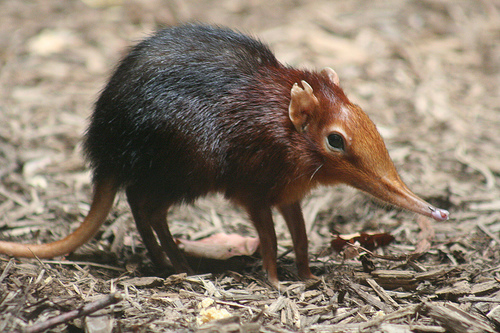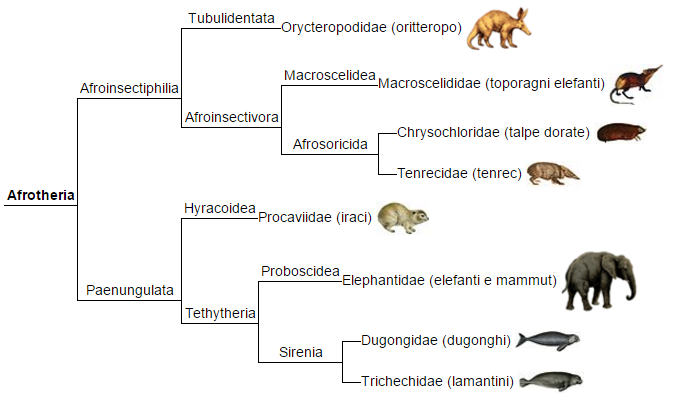I'll constantly make entire spreadsheets to analyze the most random things, and then I get annoyed when my wife doesn't want to hear the summary and conclusion.
Yup, they did. Feathers rarely leave any evidence in the form of fossils or whatever, but I remember an article from close to 20 years ago now where they had found the imprints of feathers on a small dinosaur.
Okay, so the classic classification we all learned in school, that separates animals in Kingdom, Phylum, Class, Order, Family, Genus and Species, was created by a guy called Linneaus.
Now, back in Linneaus' time, they didn't know about evolution, much less genetics, so he tried to classify animals based on the physical similarities he could see. All animals with scales in the same group (reptiles), all animals who lactate in the same group (mammals), all animals with feathers in the same group (birds), and so on and so forth.
Nowadays, though, we can use genetics to determine more precisely how related different species of animals are to eachother, and so comes a new classification, that puts animals that evolved from the same ancestor together in the same group. Which is the cladistic classification
Now a lot of animals did fit more or less with the linnean classification, but a lot of them don't. A lot of animals we thought were related are actually very distant genetically and only look similar due to convergent evolution, and a lot of the ones we thought had nothing to do with eachother turned out to be be really closely related.
Birds and reptiles are one such case. Both birds and the animals we more commonly consider as reptiles, are descended from the same ancestor and are currently considered part of the class Reptilia, which are all diapsids, meaning they have two openings on each side of the skull. Not only that, birds are descendants of a now extinct group of theropod dinosaurs called Archaeopteryx, which makes them living, breathing dinosaurs!
That's so interesting! I didn't expect convergent evolution to happen so often, I always thought it was a huge accident when that happens. Are there specific areas where it happens more often or is it combletely random?
Are all reptiles dinosaurs, or did reptiles and dinosaurs have a more distant common ancestor? I often heard things like chickens are the distant cousins of t rex or crocodiles are living dinosaurs. How much truth is there to that?
All Birds are dinosaurs, but not all dinosaurs are birds. All dinosaurs are reptiles, but not all reptiles are dinosaurs. Crocodylians for example, are not dinosaurs
I'm not sure about chickens specifically, but as you can see above, all birds are part of the theropod clade, which is the same clade as T-Rex, so they are indeed closely related.
Convergent evolution tends to happen when animals face similar environmental challenges, because sometimes a certain body plan is simply the most efficient way to tackle these challenges. For example, if animal A and animal B both live in the water, and they both need to swim fast to fill their niche, they're likely going to evolve a similar streamlined body with dorsal and pectoral fins. Ex. Sharks, Dolphins and Ichthyosaurs.
My favorite example of how cladistics has changed our perception of animals is the elephant shrew.
We named it shrew because it's obviously a shrew, right? And the elephant part was just a funny little joke because of his big snout, even though it obviously isn't related to elephants! Well, it turns out that not only is it NOT a shrew, it is actually one of the closest living relatives to elephants! How crazy is that?
That is so cool! Are there any theories as to why elephants have grown so big when one of the closest relatives is so small?
Fun fact: I had to look up what a shrew is, since I'm not a native speaker. It turns out in my native tongue the name has mouse in it, despite shrews not being mice!
When i say they're one of the closest, it doesn't necessarily mean they're close, just that a lot of the other, more closely related ones, such as mammoths, are extinct. That said, the closest living relatives to elephants are actually manatees and dugongs.
These are still different animals that evolved to fill different niches though. They're part of the clade Afrotheria, which is very, very diverse.
For more information on why this is such a diverse clade, i'd recommend Clint's Reptiles' video about it:
https://youtu.be/bO2DpSJtFBo
That last one hit best.
I'll constantly make entire spreadsheets to analyze the most random things, and then I get annoyed when my wife doesn't want to hear the summary and conclusion.
I'm currently on my taxonomy obsession. Does anyone want to hear about how birds are actually reptiles?
Yes...yes I do. Their legs are all scales but they don't shed. Pretty sure dinosaurs had feathers too.
Had? They still do! Birds are literally dinosaurs. Theropods to be precise. The same clade as the iconic T-Rex.
Yup, they did. Feathers rarely leave any evidence in the form of fossils or whatever, but I remember an article from close to 20 years ago now where they had found the imprints of feathers on a small dinosaur.
Cassowary has entered the chat
Yes, please!
Okay, so the classic classification we all learned in school, that separates animals in Kingdom, Phylum, Class, Order, Family, Genus and Species, was created by a guy called Linneaus.
Now, back in Linneaus' time, they didn't know about evolution, much less genetics, so he tried to classify animals based on the physical similarities he could see. All animals with scales in the same group (reptiles), all animals who lactate in the same group (mammals), all animals with feathers in the same group (birds), and so on and so forth.
Nowadays, though, we can use genetics to determine more precisely how related different species of animals are to eachother, and so comes a new classification, that puts animals that evolved from the same ancestor together in the same group. Which is the cladistic classification
Now a lot of animals did fit more or less with the linnean classification, but a lot of them don't. A lot of animals we thought were related are actually very distant genetically and only look similar due to convergent evolution, and a lot of the ones we thought had nothing to do with eachother turned out to be be really closely related.
Birds and reptiles are one such case. Both birds and the animals we more commonly consider as reptiles, are descended from the same ancestor and are currently considered part of the class Reptilia, which are all diapsids, meaning they have two openings on each side of the skull. Not only that, birds are descendants of a now extinct group of theropod dinosaurs called Archaeopteryx, which makes them living, breathing dinosaurs!
That's so interesting! I didn't expect convergent evolution to happen so often, I always thought it was a huge accident when that happens. Are there specific areas where it happens more often or is it combletely random?
Are all reptiles dinosaurs, or did reptiles and dinosaurs have a more distant common ancestor? I often heard things like chickens are the distant cousins of t rex or crocodiles are living dinosaurs. How much truth is there to that?
All Birds are dinosaurs, but not all dinosaurs are birds. All dinosaurs are reptiles, but not all reptiles are dinosaurs. Crocodylians for example, are not dinosaurs
I'm not sure about chickens specifically, but as you can see above, all birds are part of the theropod clade, which is the same clade as T-Rex, so they are indeed closely related.
Convergent evolution tends to happen when animals face similar environmental challenges, because sometimes a certain body plan is simply the most efficient way to tackle these challenges. For example, if animal A and animal B both live in the water, and they both need to swim fast to fill their niche, they're likely going to evolve a similar streamlined body with dorsal and pectoral fins. Ex. Sharks, Dolphins and Ichthyosaurs.
My favorite example of how cladistics has changed our perception of animals is the elephant shrew.
We named it shrew because it's obviously a shrew, right? And the elephant part was just a funny little joke because of his big snout, even though it obviously isn't related to elephants! Well, it turns out that not only is it NOT a shrew, it is actually one of the closest living relatives to elephants! How crazy is that?
That is so cool! Are there any theories as to why elephants have grown so big when one of the closest relatives is so small?
Fun fact: I had to look up what a shrew is, since I'm not a native speaker. It turns out in my native tongue the name has mouse in it, despite shrews not being mice!
When i say they're one of the closest, it doesn't necessarily mean they're close, just that a lot of the other, more closely related ones, such as mammoths, are extinct. That said, the closest living relatives to elephants are actually manatees and dugongs.
These are still different animals that evolved to fill different niches though. They're part of the clade Afrotheria, which is very, very diverse.
For more information on why this is such a diverse clade, i'd recommend Clint's Reptiles' video about it: https://youtu.be/bO2DpSJtFBo
SUBSCRIBE
Just wait until you get to the monotremes